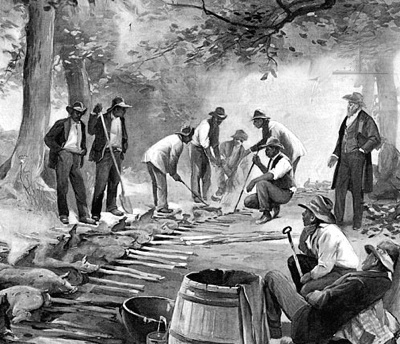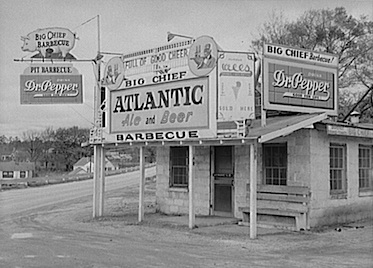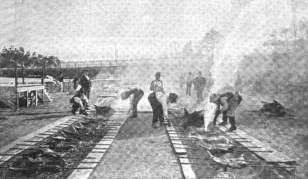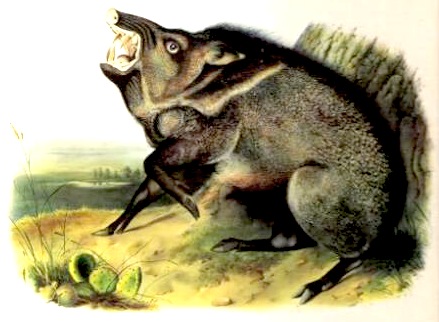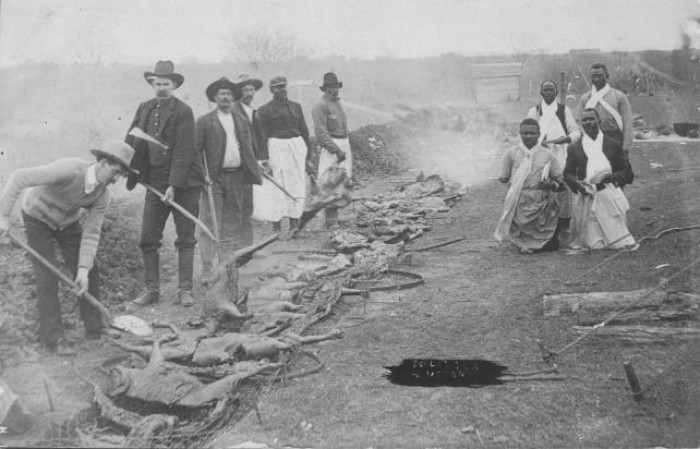By Parthenia Antoinette Hague
Then there were the annual barbecues that each and all planters gave without fail to their slaves when the crops had all been laid by, which semi-holiday weeks embraced the last of July and the first of August. I remember in particular one barbecue roast that I witnessed one night in company with the household. The “pits ” were some little distance from the mansion, and were half filled with red-hot coals of oak and hickory wood, over which the flesh of whole dressed beef, mutton, and shoats were slowly roasting, lying on a grate made of split staves of oak or hickory wood. A goodly-sized vessel, containing vinegar, butter, salt, pulverized sage, pepper, and thyme, all mingled together with a “swab,” stood in close proximity to the barbecuing meat.
Every now and then the roasting flesh would be turned over with long oak sticks sharpened smoothly to a point at one end, which answered the place of forks; deep and long incisions would be made in the barbecuing meat, and with the swab a good basting of the mixed condiments from the bowl would be spread over; the process of turning the roasting flesh over the glowing red coals and basting with the seasoning continued till the meat was thought to be thoroughly done. It would sometimes be far beyond the hour of midnight before the barbecuing meat was removed from the “pits,” and I yet think that such barbecued meats cannot be surpassed by any other sort of cooked or roasted meats. When cold and sliced, it was certainly delicious.
A night barbecuing was a weird scene. Blazing pine-torches heaped on the rude stands improvised for the occasion threw a ruddy glow out over the dark forest, giving an uncanny aspect to the long thick moss swaying sylphlike in the night breeze. Some of the negroes would be tending the roasting flesh; some with the swab, basting with the seasoning; some laughing loud enough to wake the sleeping echoes; some lazily stretched out on the ground thinking of tomorrow’s feast. Now and then some one would “pat Juba,” as they called it, while the dim light of the moon and stars peeping through the heavy foliage, together with the savory smoke rising from the pits, enhanced the strangeness of the fete.
When the morrow came, two or three long tables were set in the far-reaching shade of grand’ old oaks, whose every limb was hung plentifully with the long gray moss that is so common in the southern part of the Southern States, and which imparts to the trees in that section an aspect strikingly patriarchal.
The tables would be weighted with the flesh of the ox, mutton, pork, and great pans of chicken pies, as well as fruits, vegetables, and light bread and cakes of our bolted meal. Seats were arranged all around, and old and honored negroes, called to preside at the heads of the tables, would bid them all to seat themselves, — by fifties, it often was, —when, with hands uplifted, they invoked the divine blessing.
Many in southern Alabama yet retain a vivid recollection of these regular annual barbecues, given to the slaves when the crops had all been “laid by.”
From: A Blockaded Family: Life in Southern Alabama During the Civil War, by Parthenia Antoinette Hague. Boston and New York: Houghton, Mifflin, 1888.
For more stories and photos of Eyewitness Historical Barbecue, go here.

